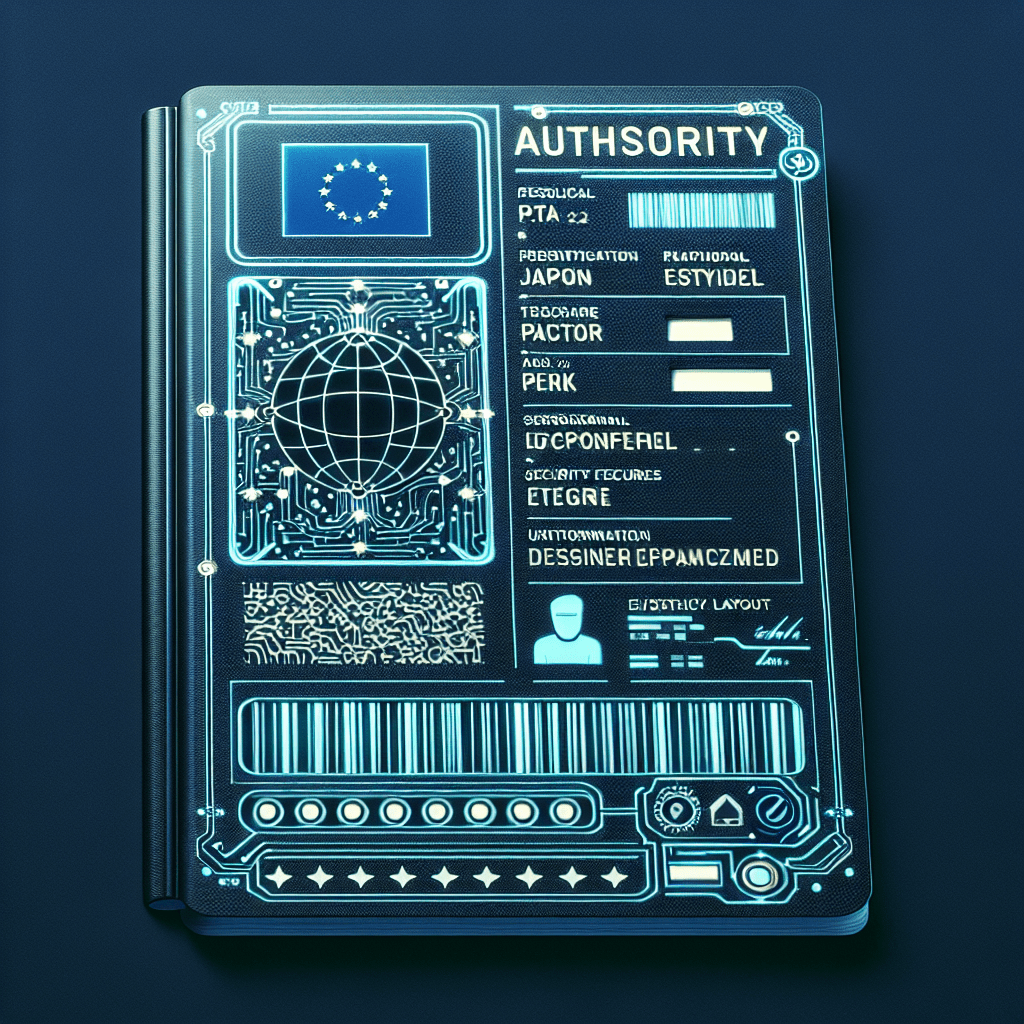3 Common Misconceptions About ETIAS and the Truth Behind Them

The European Travel Information and Authorization System (ETIAS) is a crucial development for travelers planning to visit the Schengen area. Designed to enhance security and streamline the process of entering European countries, ETIAS is often misunderstood. Many travelers are unsure about its purpose and how it affects their travel plans. Addressing these misconceptions is essential for ensuring a smooth journey to Europe. By clarifying the role of ETIAS, travelers can better prepare for their trips and avoid unnecessary complications. This discussion will focus on debunking common myths surrounding ETIAS, providing clarity and accurate information. For those planning to travel to Europe, understanding the ETIAS is vital to ensure compliance with EU travel regulations and to enjoy a hassle-free experience. As we delve into these misconceptions, it becomes clear that knowledge is the key to navigating the complexities of European travel authorization.

Misconception 1: ETIAS is a Visa
Clarity on ETIAS as an Electronic Travel Authorization
One of the most prevalent misconceptions about the European Travel Information and Authorization System (ETIAS) is that it functions as a visa. In reality, ETIAS is an electronic travel authorization, distinct from traditional visas. Unlike a visa, which often requires a lengthy application process, interviews, and extensive documentation, ETIAS is designed to be a streamlined and efficient system. It allows travelers from visa-exempt countries to enter the Schengen area with minimal hassle. The primary purpose of ETIAS is to enhance security by pre-screening travelers before they arrive in Europe, ensuring that those who pose a potential risk are identified in advance.
The differences between ETIAS and traditional visas are significant. While a visa involves a comprehensive review process that can take weeks or even months, ETIAS applications are typically processed within minutes. This efficiency is achieved through an automated system that cross-references applicants’ information against various security databases. As a result, travelers can receive their European travel authorization quickly, allowing them to plan their trips with confidence.
Reasons for the Confusion
The confusion surrounding ETIAS and its classification as a visa often stems from a lack of awareness about travel authorizations. Many travelers are familiar with the concept of a visa but may not understand the nuances of electronic travel authorizations like ETIAS. This misunderstanding is particularly common among individuals from non-EU countries who are accustomed to traditional visa processes. Additionally, the introduction of ETIAS as a new requirement for Schengen area travel has led to misconceptions about its purpose and function.
Awareness of ETIAS is crucial for travelers planning to visit Europe. By understanding that ETIAS is not a visa, travelers can better navigate the requirements for entering the Schengen zone. This knowledge helps to alleviate concerns and ensures that travelers are prepared with the necessary documentation for their journey.
Explanation of the Official Requirements
To obtain an ETIAS, travelers must meet specific eligibility criteria. These include holding a valid passport from a visa-exempt country, having a clean criminal record, and not posing a security threat to the EU. The application process is straightforward, requiring applicants to provide personal information, travel details, and answers to security-related questions. Once approved, the ETIAS is valid for multiple entries over a period of three years or until the passport expires, whichever comes first.
The benefits of having an ETIAS are numerous. It simplifies the process of entering the Schengen area countries, allowing travelers to focus on enjoying their trip rather than worrying about complex visa requirements. Moreover, the European travel system is designed to enhance security, ensuring that travelers and residents alike can feel safe. By understanding the true nature of ETIAS, travelers can appreciate its role in facilitating seamless travel to Europe while maintaining robust EU border control.

Misconception 2: ETIAS Approval is Guaranteed
Overview of the ETIAS Application Process
Another common misconception about the European Travel Information and Authorization System (ETIAS) is that approval is guaranteed for all applicants. While the process is designed to be efficient and user-friendly, it is not without its checks and balances. The ETIAS application process involves several factors that are carefully considered to ensure the safety and security of the Schengen area countries. Applicants must provide accurate personal information, including their full name, date of birth, and passport details. This information is then cross-referenced with various security databases to assess the applicant’s eligibility for European travel authorization.
Accuracy in the application is paramount. Any discrepancies or errors in the information provided can lead to delays or even denial of the ETIAS. Therefore, it is crucial for applicants to double-check their entries before submission. The system is designed to flag any inconsistencies, which can trigger a more in-depth review of the application. This thorough process is part of the EU travel regulations aimed at maintaining the integrity of the Schengen zone entry system.
Potential Reasons for Application Denial
While the majority of ETIAS applications are approved, there are several reasons why an application might be denied. One of the primary factors is security concerns. The European travel system is designed to prevent individuals who pose a threat to public safety from entering the Schengen area. This includes individuals with known ties to criminal activities or those flagged by international security agencies. Additionally, public health concerns can also lead to a denial, particularly if the applicant has been in regions with contagious diseases.
Past immigration violations are another reason for potential denial. Applicants with a history of overstaying visas or violating Schengen visa requirements may find their ETIAS applications rejected. The system is designed to uphold the Schengen travel rules, ensuring that only those who respect the Europe visa policy are granted entry. Understanding these potential pitfalls can help applicants better prepare their applications and avoid unnecessary complications.
Guidance on Reapplying and Addressing Issues
For applicants who receive a denial, there are steps that can be taken to address the issues and reapply. It is important to carefully review the reasons for the denial, which are typically provided in the notification. Addressing these concerns, whether they relate to inaccuracies in the application or past violations, is crucial for a successful reapplication. Applicants are encouraged to gather any supporting documentation that may help clarify their situation and demonstrate compliance with EU entry requirements.
Reapplying for an ETIAS is possible, but it requires a thorough review of the initial application and a clear understanding of the eligibility criteria. By ensuring that all information is accurate and up-to-date, applicants can improve their chances of approval. Additionally, seeking guidance from official resources or consulting with travel experts can provide valuable insights into the process. Ultimately, understanding the importance of the European entry permit and adhering to the guidelines can facilitate a smoother application experience and successful travel to Europe.

Misconception 3: ETIAS Leads to Restricted Travel Freedom
Explanation of Schengen Zone Access with ETIAS
A common concern among travelers is that the European Travel Information and Authorization System (ETIAS) might restrict their travel freedom within the Schengen area. However, ETIAS is designed to facilitate, not hinder, travel to Europe. Once approved, ETIAS grants travelers access to all Schengen area countries, which include popular destinations such as France, Germany, Italy, and Spain, among others. This European travel authorization allows for seamless movement across borders within the Schengen zone, making it easier for travelers to explore multiple countries during their visit.
The length of stay permitted under ETIAS is up to 90 days within a 180-day period, providing ample time for tourists and business travelers to enjoy their European adventures. This flexibility is a significant advantage of the ETIAS, as it aligns with the visa waiver program that many travelers are accustomed to. By understanding the scope of the European entry permit, travelers can plan their itineraries with confidence, knowing that their travel freedom is preserved.
Addressing the Fear of Surveillance and Data Privacy
Another misconception is that ETIAS might lead to increased surveillance and compromise data privacy. However, the European Union places a strong emphasis on data protection, and the ETIAS system is no exception. Under EU travel regulations, stringent measures are in place to ensure that personal information is handled with the utmost care. The data collected during the ETIAS application process is used solely for security and border control purposes, and it is stored in compliance with EU data protection laws.
Applicants can rest assured that their personal information is safeguarded against unauthorized access. The European travel system is designed to balance security needs with privacy rights, ensuring that travelers’ data is protected while maintaining the integrity of the Schengen zone entry process. By understanding how personal information is used and stored, travelers can feel more at ease about the ETIAS requirements.
Enhancing Travel Security through ETIAS
One of the primary objectives of ETIAS is to enhance travel security for both travelers and member countries. By implementing this system, the EU aims to strengthen border control and prevent potential threats from entering the Schengen area. The pre-screening process allows authorities to identify individuals who may pose a risk, thereby enhancing the safety of all travelers and residents within the region.
ETIAS provides significant safety benefits by ensuring that only those who meet the EU entry requirements are granted access. This proactive approach to security helps maintain the Schengen travel rules and supports the overall stability of the region. For travelers, this means a safer and more secure travel experience, as the system works to prevent incidents that could disrupt their journey. By appreciating the role of ETIAS in enhancing security, travelers can better understand its importance in the broader context of European travel authorization.
Simplify Your Travel with SimpleVisa
Fast & Easy Visa Applications
Navigating the complexities of international travel authorizations can be daunting, but SimpleVisa simplifies the process for you. Whether you’re applying for ETIAS or a traditional visa, SimpleVisa offers a streamlined, user-friendly platform that ensures a smooth and hassle-free application experience. Their expert guidance and efficient processing save you time and stress, helping you get your travel documents with ease.
🔹 Ready to apply? Get started now with SimpleVisa and secure your travel authorization in just a few clicks!

Conclusion
ETIAS represents a crucial step forward in ensuring secure and efficient travel to the Schengen area. By implementing this electronic travel authorization system, the European Union has taken significant measures to enhance the safety and security of its borders. ETIAS is not merely a bureaucratic hurdle; it is a vital component of the EU’s strategy to maintain the integrity of the Schengen zone. Through pre-screening travelers and cross-referencing their information with security databases, ETIAS helps to identify potential risks before they reach European soil. This proactive approach not only protects the residents of Schengen area countries but also ensures a safer travel experience for visitors. By understanding the true purpose and function of ETIAS, travelers can appreciate its role in facilitating secure travel and maintaining the high standards of EU border control.